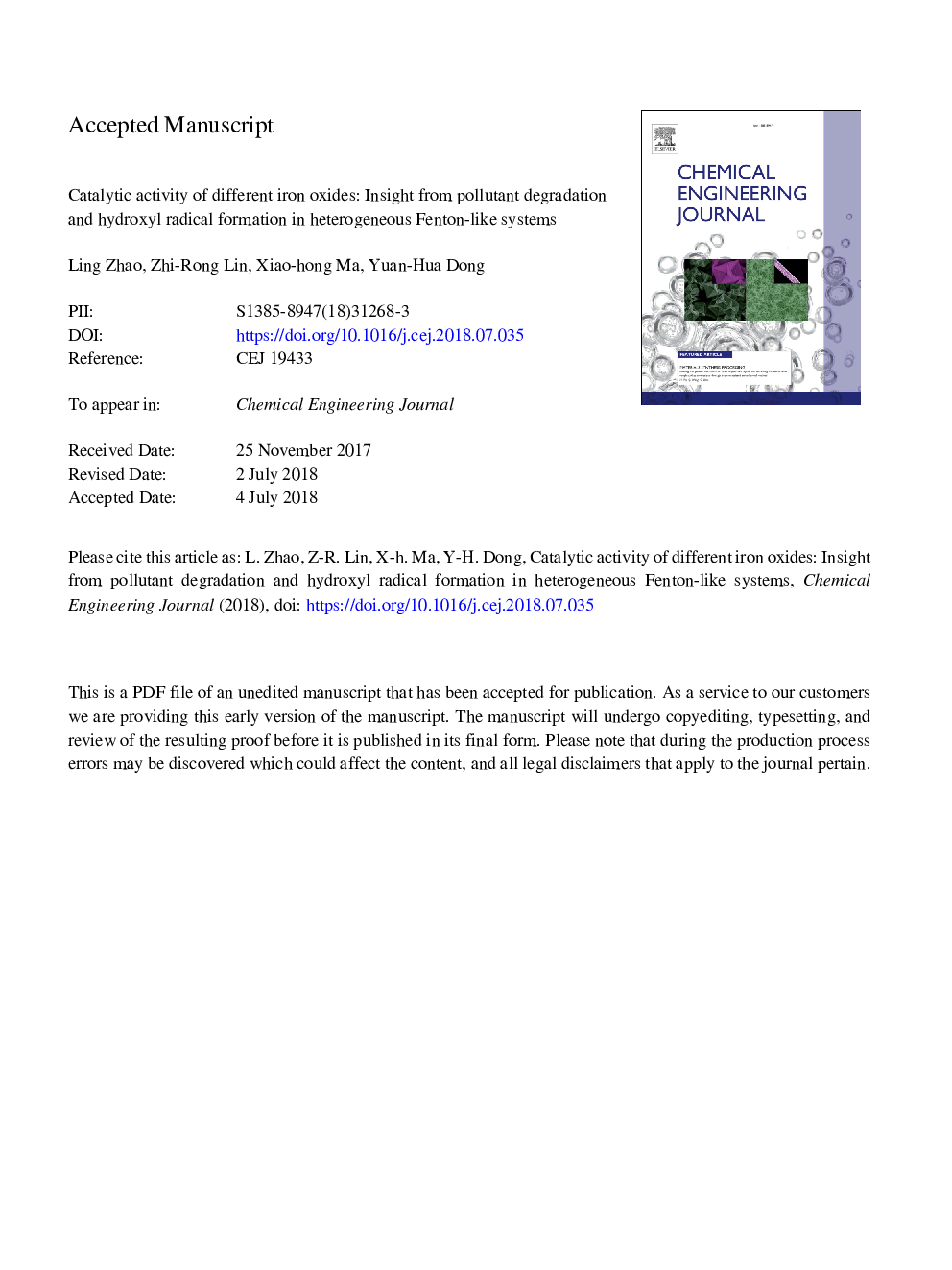| کد مقاله | کد نشریه | سال انتشار | مقاله انگلیسی | نسخه تمام متن |
|---|---|---|---|---|
| 6578057 | 1422926 | 2018 | 41 صفحه PDF | دانلود رایگان |
عنوان انگلیسی مقاله ISI
Catalytic activity of different iron oxides: Insight from pollutant degradation and hydroxyl radical formation in heterogeneous Fenton-like systems
ترجمه فارسی عنوان
فعالیت کاتالیستی اکسید های مختلف آهن: بینش از تخریب آلاینده و تشکیل رادیکال هیدروکسیل در سیستم های ناهمگونی مانند فنتون
دانلود مقاله + سفارش ترجمه
دانلود مقاله ISI انگلیسی
رایگان برای ایرانیان
کلمات کلیدی
موضوعات مرتبط
مهندسی و علوم پایه
مهندسی شیمی
مهندسی شیمی (عمومی)
چکیده انگلیسی
The catalytic performance of iron oxides in 2,4,4â²-trichlobiphenyl (PCB28) degradation following an order of goethiteâ¯>â¯magnetiteâ¯>â¯hydrated iron(III) oxideâ¯>â¯hematite was observed in four iron oxides catalyzed Fenton-like reactions, which was not consistent with the stoichiometric efficiency of OH generation. This result indicates that OH was not the sole active species responsible for PCB28 degradation in four iron oxides catalyzed Fenton-like systems. The reductive degradation of hexachloroethane (HCE) was 76.8%, 58.7%, 46.1% and 37.6% for magnetite, goethite, hematite and hydrated iron(III) oxide, respectively, further suggesting that both oxidative species (OH) and reductive species (HO2) simultaneously contributed on PCB28 degradation. The addition of tert-butyl alcohol (OH scavenger) decreased the amount of 7-hydroxycoumarin (7-HC, OH indicator) by 42%, 77%, 97%, and 97% for magnetite, goethite, hematite, and hydrated iron(III) oxide, respectively. Meanwhile, the addition of p-benzoquinone (HO2 scavenger) only reduced the amount of 7-HC by 77%, 27%, and 33.5% for magnetite, hematite, and hydrated iron(III) oxide, respectively; but increased the amount of 7-HC by 126.7% in the goethite/H2O2 system. This result indicates that the mechanism of OH generation from H2O2 catalyzed by four iron oxides was different. For goethite, the surface lattice iron was primarily responsible for activating H2O2 to form reactive species (OH and HO2) and thereby degrade pollutants on the oxide surface. For magnetite, both the surface lattice iron and the dissolved Fe in solution played an equally important role in catalyzing H2O2 decomposition to form and propagate reactive species for pollutant degradation. For hematite and hydrated iron(III) oxide, the solution phase chain reaction effectively propagated by dissolved Fe should be the primary catalytic mechanism although the chain reaction was initiated by the surface processes.
ناشر
Database: Elsevier - ScienceDirect (ساینس دایرکت)
Journal: Chemical Engineering Journal - Volume 352, 15 November 2018, Pages 343-351
Journal: Chemical Engineering Journal - Volume 352, 15 November 2018, Pages 343-351
نویسندگان
Ling Zhao, Zhi-Rong Lin, Xiao-hong Ma, Yuan-Hua Dong,
